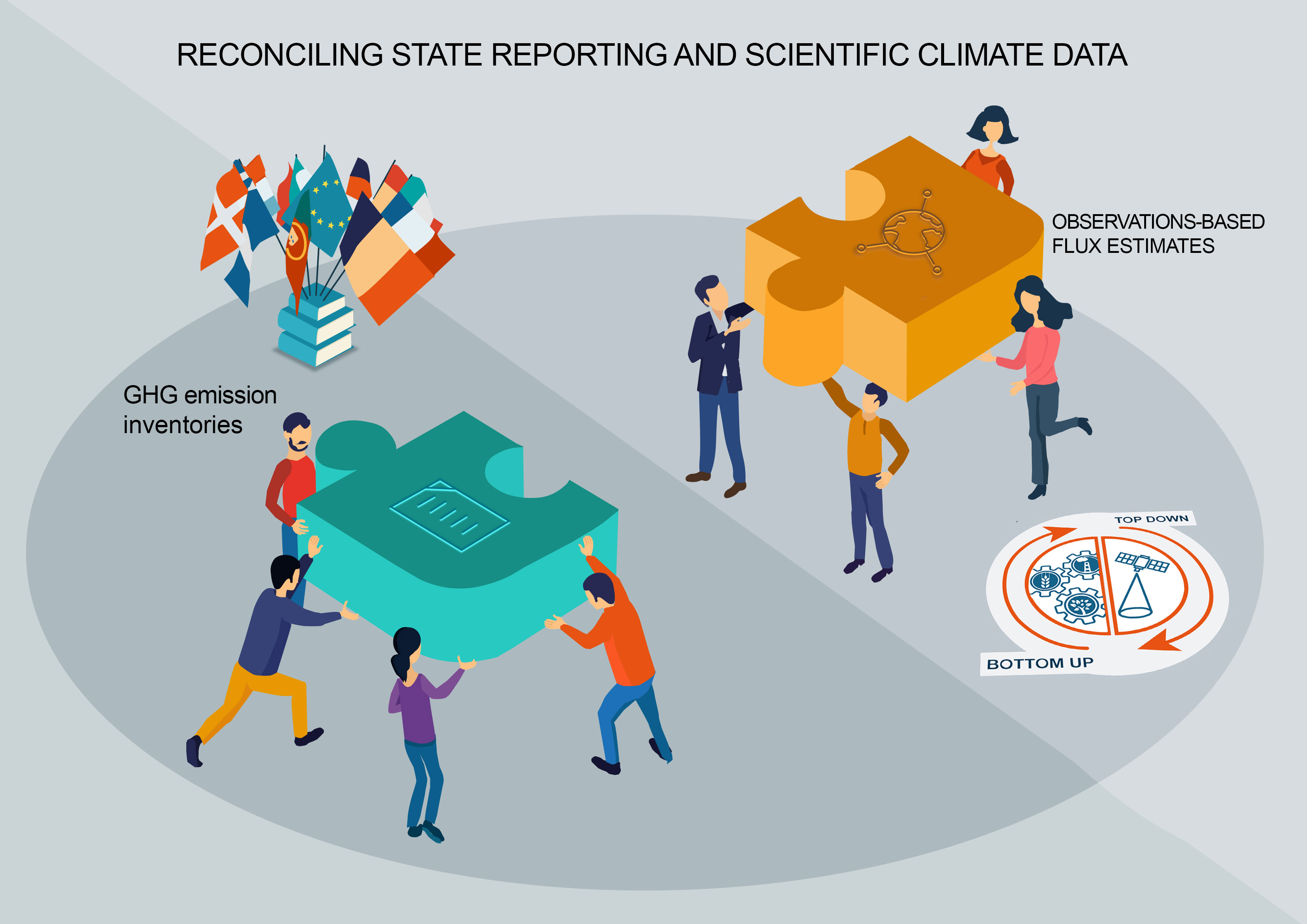
Context
As the negative impacts of rising global temperatures become increasingly evident, national governments, regional authorities and private stakeholders are enhancing efforts to curb the emissions of greenhouse gases (GHG) responsible for global warming.
Measuring the effectiveness of GHG emission reduction policies against agreed-upon international targets require accurate and precise estimates of emissions and their trends. These estimates need to be established and regularly updated using transparent methods, tracable to international standards. VERIFY proposes to quantify more accurately carbon stocks and the fluxes of carbon dioxide (CO2), methane (CH4), and nitrous oxide (N2O) across the EU based on independent observations in support of inventories that rely only on statistical data. The same approach will also be tested for US, China and Indonesia, in collaboration with foreign partners. Accurate characterization of the space-time variations of GHG fluxes, separating their anthropogenic and natural components and their drivers, will be based on advanced modelling approaches using atmospheric GHG measurements, tracer transport inversions and various arrays of land observations, in-situ and from space. The improved knowledge of GHG budgets from VERIFY will be used to improve national inventories, in collaboration with national inventory agencies, and to deliver policy-relevant information to track progress of the EU mitigation efforts to meet the targets of the Paris Agreement on Climate, in line with international cooperation mechanisms promoted by the WMO, the IPCC and the UNFCCC.

Aim
VERIFY’s primary aim is to develop scientifically robust methods to assess the accuracy and potential biases in national inventories reported by the parties through an independent pre-operational framework.
The main concept is to provide observation-based estimates of anthropogenic and natural GHG emissions and sinks as well as associated uncertainties. The proposed approach is based on the integration of atmospheric measurements, improved emission inventories, ecosystem data, and satellite observations, and on an understanding of processes controlling GHG fluxes (ecosystem models, GHG emission models). Two complementary approaches relying on observational data-streams will be combined in VERIFY to quantify GHG fluxes:
1) atmospheric GHG concentrations from satellites and ground-based networks (top-down atmospheric inversion models) and
2) bottom-up activity data (e.g. fuel use and emission factors) and ecosystem measurements (bottom-up models).
For CO2, a specific effort will be made to separate fossil fuel emissions from ecosystems fluxes. For CH4 and N2O, we will separate agricultural from fossil fuel and industrial emissions. Finally, trends in the budget of the three GHGs will be analysed in the context of NDC targets.

